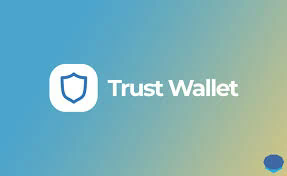Understanding Trust Wallet: An In-Depth Analysis of Its Features, Security, and Implications in the Cryptocurrency Space
—
## Introduction
In the ever-evolving landscape of cryptocurrency, digital wallets play a crucial role in managing assets securely and efficiently. Trust Wallet has emerged as one of the leading platforms in this domain, providing users with a comprehensive suite of features to facilitate the storage, management, and trading of various cryptocurrencies. This article delves into the intricacies of Trust Wallet, exploring its features, security measures, user experience, and its broader implications in the cryptocurrency ecosystem.
### What is Trust Wallet?
Founded in 2017 and acquired by Binance in 2018, Trust Wallet is a decentralized mobile wallet that allows users to store, send, and receive a wide array of cryptocurrencies. Available for both iOS and Android, Trust Wallet supports over 160k different assets, including major coins and tokens from various blockchain networks. As a non-custodial wallet, Trust Wallet does not hold users’ private keys, allowing for greater control and security over their assets.
### Key Features of Trust Wallet
#### 1. Multi-Currency Support
One of the standout features of Trust Wallet is its extensive support for multiple cryptocurrencies. Users can manage Bitcoin (BTC), Ethereum (ETH), Binance Coin (BNB), and thousands of other tokens across various blockchains, making it an all-in-one solution for many crypto enthusiasts. This flexibility is a significant advantage, especially for those involved in diverse portfolios.
#### 2. Decentralization and Ownership
Trust Wallet allows users to be the sole custodians of their private keys, which are stored locally on their devices instead of being held on a centralized server. This decentralization eliminates the risk of hacks that can compromise a centralized exchange, providing users with greater autonomy over their assets. The app’s open-source nature also enables transparency and community-driven development.
#### 3. Built-in DApp Browser
Trust Wallet incorporates a decentralized application (DApp) browser, allowing users to interact directly with DApps such as decentralized exchanges (DEXs), games, and NFTs. This feature enhances the wallet’s functionality by enabling seamless access to various blockchain applications without requiring users to leave the wallet environment.
#### 4. Integration with Binance Smart Chain (BSC)
Trust Wallet has established extensive compatibility with Binance Smart Chain, allowing users to access various DeFi projects and services built on BSC. This integration supports features like staking, lending, and trading, promoting participation in the booming DeFi landscape directly from the wallet.
#### 5. Staking Capabilities
Another noteworthy feature is Trust Wallet’s support for staking, enabling users to earn passive income by participating in the consensus mechanisms of various Proof-of-Stake (PoS) networks. Users can stake supported cryptocurrencies directly from the wallet, making it an attractive option for those looking to generate revenue from their holdings.
### Security Features of Trust Wallet
Security is a paramount concern in the cryptocurrency space, and Trust Wallet employs several measures to ensure user protection.
#### 1. Private Key Ownership
As previously mentioned, Trust Wallet does not store private keys on its servers. Instead, the keys are generated on users’ devices and remain there, significantly reducing the risk of unauthorized access.
#### 2. Biometric Security
The wallet app supports biometric unlock features, leveraging facial recognition or fingerprint scanning to enhance security. This functionality adds an additional layer of protection against unauthorized access to the wallet.

#### 3. Encrypted Backup
Trust Wallet enables users to create encrypted backups of their wallets. This feature ensures that even if a user loses their device, they can recover their funds by restoring the wallet using their backup phrase.
#### 4. Regular Updates and Bug Bounties
The development team behind Trust Wallet emphasizes software integrity and security. The wallet regularly undergoes updates and improvements, often in response to community feedback. Additionally, the team runs bug bounty programs that incentivize ethical hackers to report vulnerabilities.
### User Experience and Interface
Trust Wallet is designed with user-friendliness at its core. The interface is intuitive, enabling both beginners and experienced users to navigate effortlessly. Users can easily send and receive cryptocurrencies, view transaction history, and monitor their portfolio’s performance. The wallet also provides real-time market data, helping users make informed decisions.
### The Role of Trust Wallet in the Cryptocurrency Ecosystem
#### 1. Promoting Decentralization
By emphasizing a non-custodial model, Trust Wallet contributes to the broader movement towards decentralization in finance. It empowers users to take control of their assets, aligning with the ethos of cryptocurrencies as peer-to-peer financial systems.
#### 2. Enhancing Accessibility
Trust Wallet’s mobile-first approach makes cryptocurrency more accessible to a broader audience. In regions where traditional banking is limited, Trust Wallet can serve as a gateway to financial services, enabling users to participate in the global economy through digital assets.
#### 3. Bridging Traditions
Through its robust integration with Binance Smart Chain, Trust Wallet serves as a bridge connecting users to the rising DeFi landscape. By enabling direct access to various financial applications, Trust Wallet not only enhances user experience but also fosters innovation and growth within the cryptocurrency market.
### Challenges and Considerations
Despite its many benefits, Trust Wallet is not without challenges. Users must remain vigilant against phishing attempts and other security threats, especially given the nature of a decentralized ecosystem. Moreover, the responsibility of managing private keys may overwhelm new users unfamiliar with cryptographic principles. Trust Wallet’s educational resources aim to mitigate this by guiding users through best practices for security and asset management.
### Conclusion
In summary, Trust Wallet represents a significant player in the cryptocurrency wallet space, with its rich array of features, commitment to decentralization, and strong security protocols. As the cryptocurrency landscape continues to evolve, Trust Wallet’s role as a facilitator of secure asset management and decentralized finance engagement will likely expand. Understanding its functionalities and implications is essential for anyone looking to navigate the complexities of digital currency effectively.
As cryptocurrency adoption inevitably increases, platforms like Trust Wallet remain at the forefront of user-centered innovation, redefining how individuals interact with their financial assets in a decentralized world. The future of Trust Wallet continues to be promising, with opportunities for growth and enhancement in the fast-paced, dynamic environment of digital currencies.


